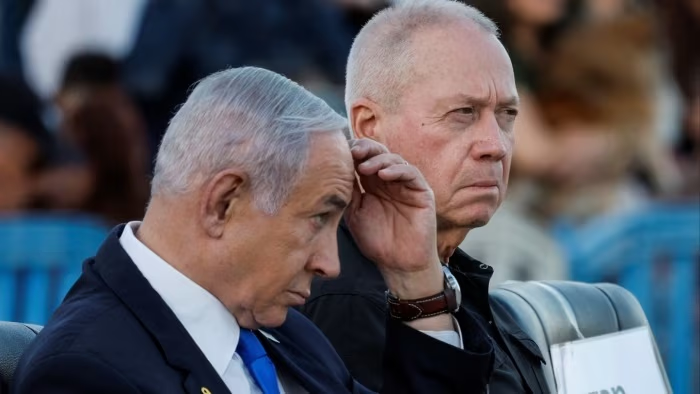After 15 months of relentless hostilities, the Middle East breathes a sigh of relief as peace hopes ignite. Hamas and Israel's agreement on a ceasefire marks a significant milestone, with both parties laying down numerous conditions. During these turbulent months, efforts by various global powers to mediate an end to the conflict repeatedly faltered, escalating tensions as the war extended its reach to Iran, Syria, Turkey, Yemen, and Lebanon. Exploring the dynamics of this unexpected ceasefire sheds light on the strategic maneuvers at play. What led to this critical turning point, and who stands to gain more from this pact? Does Israel harbor a greater scheme behind this agreement? Despite the ceasefire, dissent simmers within Israel; notable figures and citizens express discontent, evidenced by the resignation of Netanyahu’s associate, Itamar Ben-Gvir.
Why Did Israel and Hamas Agree to a Ceasefire?
This question looms large, especially given the uproar surrounding a ceasefire proposal eight months ago. Hamas had signaled its willingness for peace talks, yet Prime Minister Benjamin Netanyahu, amidst mounting international pressure, denied the deal, stating his resolve to cease hostilities only upon achieving his objectives in Gaza. Now, the pivotal query arises: what changed that prompted Netanyahu to reconsider?
Firstly, Israel's Stance...
Recent months have reshaped the Middle Eastern landscape considerably. Israel perceives its influence in the region has grown, reinforced by eliminating significant Hezbollah and Hamas leaders, including figures like Yahya Sinwar. October airstrikes on Iran weakened its air defense, and Syria has seen a regime change affecting its ties with Iran and Lebanon. Consequently, Israel's standing has strengthened while its adversaries have been considerably weakened.
Netanyahu's Constraint...
Despite landmark developments, one unresolved element remains: the incomplete defeat of Hamas. Netanyahu's reiterated vows to dismantle Hamas completely remain unfulfilled. Though Israel inflicted substantial losses on Hamas, the group persists, evolving continually. According to a report by 'The Hindu,' U.S. Secretary of State Antony Blinken recently noted that Hamas has replenished its ranks to pre-war numbers, underscoring Israel's evolving strategy. With escalating domestic pressure regarding hostages, Israel turned towards diplomatic resolutions.

Source: aajtak
The U.S. Influence
President Biden has long endeavored to mediate a cessation to the Israeli-Hamas conflict while maintaining a steadfast alliance with Israel, providing substantial military support. However, before Trump’s inauguration, the ceasefire deal emerged, with global media attributing a crucial role to the Trump factor. Trump had previously warned that failing to release Israeli hostages before his swearing-in would engulf the Middle East in turmoil. Trump's pro-Israel stance draws significant attention.
Another dimension involves Yemen. Concurrent with the Israeli-Gaza war, Yemeni forces launched continuous attacks, hampering Red Sea commerce. Despite Israel and America's military responses, Yemeni Houthi assaults persisted. The potential ceasefire raises hopes for a halt in Houthi aggression, promising a boon for the global economy.
The Cost to Gaza in This Conflict
The Israeli and Hamas conflict commenced on October 7th, 2023, as Hamas insurgents attacked southern Israel, resulting in 1,200 deaths and over 250 hostages. Israel's retaliatory military operations in Gaza reportedly accounted for over 46,000 Palestinian casualties, leaving millions displaced and thousands of citizens fleeing. Israeli military actions initially obstructed international aid, leading to absolute devastation in the area.

Source: aajtak
The Three-Phase Agreement
Qatar's Prime Minister announced a three-phase deal between Israel and Hamas to commence on Sunday. Here’s an overview of the planned phases:
Phase One
Spanning 42 days (6 weeks), Hamas will release 33 Israeli hostages, reciprocated by Israel with over a thousand Palestinian prisoner releases. The first day will see three hostages freed, followed by regular releases throughout the period.
Concurrently, Israeli forces will withdraw from populated Gaza regions, enabling Palestinians to return to their neighborhoods. Accelerated humanitarian aid influx includes daily truckloads of supplies, with reconstruction efforts for healthcare facilities underway.
Phase Two
Remaining hostages will gain freedom for the release of additional Palestinian prisoners, including nearly 190 serving 15+ years. The complete withdrawal of Israeli troops from Gaza is expected.
Phase Three
The ultimate phase seeks Gaza's comprehensive reconstruction, anticipated to extend over several years.




